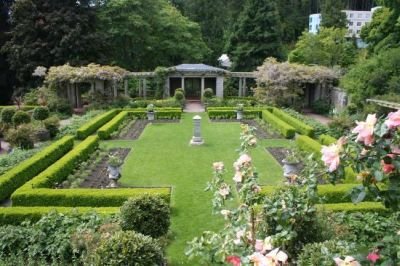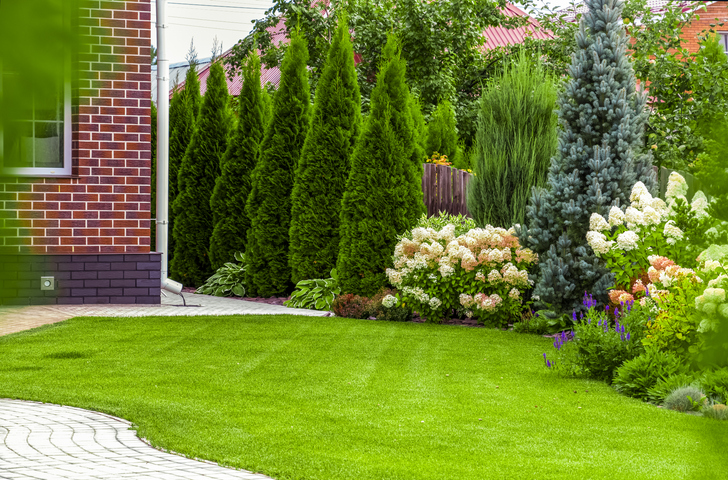The 30-Second Trick For Hilton Head Landscapes
Table of ContentsWhat Does Hilton Head Landscapes Mean?The Basic Principles Of Hilton Head Landscapes Rumored Buzz on Hilton Head LandscapesThe Basic Principles Of Hilton Head Landscapes How Hilton Head Landscapes can Save You Time, Stress, and Money.Things about Hilton Head LandscapesThe Best Guide To Hilton Head Landscapes
Line produces all types and patterns and can be utilized in a variety of ways in the landscape. Line in the landscape is created by the edge in between 2 products, the overview or shape of a form, or a lengthy linear function. Lines are an effective tool for the designer because they can be used to produce an unlimited selection of shapes and forms, and they manage movement of the eye and the body.

Lines can have one or more features, such as those described below, but they usually serve different purposes. Figure 1. Lines in the landscape - landscaping hilton head sc. The homes of lines determine just how individuals react to the landscape, both mentally and physically. Straight lines are structural and strong; they produce an official character, are normally connected with an in proportion design, and lead the eye straight to a focal factor.
The 20-Second Trick For Hilton Head Landscapes
Straight lines are frequently located in hardscape edges and material. Bent lines produce a casual, natural, kicked back character that is linked a lot more with nature and asymmetrical equilibrium. Rounded lines move the eye at a slower speed and add mystery to the area by developing covert views. Upright lines relocate the eye up, making a space really feel bigger.
Upright lines in the landscape consist of high, slim plant product, such as trees, or high frameworks, such as an arbor or a bird house on a post. Straight lines move the eye along the ground plane and can make an area really feel larger. Reduced lines are much more subdued and create a feeling of rest or repose.
Hilton Head Landscapes - The Facts
Low lines are developed by reduced yard wall surfaces, walkways, and brief hedges. Lines are made use of to draw kinds on a plan. In plan view, they specify plant beds and hardscape areas. Lines are additionally created by the vertical forms of built attributes and plant material. There are three key line kinds that produce kind in the landscape: bedlines, hardscape lines, and plant lines.
Bedlines attach plant product to the house and hardscape because the eye follows the line, relocating the gaze through the landscape. Hardscape lines are created by the edge of the hardscape, which defines the developed framework. Line can additionally be produced by lengthy and narrow materials, such as a fence or wall.
Indicators on Hilton Head Landscapes You Should Know
Form is discovered in both hardscape and plants, and it is normally the dominant visual aspect that spatially organizes the landscape and usually establishes the style of the garden. The type of frameworks, plant beds, and yard accessories also figures out the general type theme of the yard. Formal, geometric kinds include circles, squares, and polygons.
Plants develop form in the yard with their describes or silhouettes, however form can additionally be defined by a void or unfavorable space between plants - landscaping hilton head sc (https://myanimelist.net/profile/h1tnhdlndscps). Circles can be complete circles, or they can be divided into fifty percent circles or circle sectors and combined with lines to develop arcs and tangents
About Hilton Head Landscapes
Circles can also be stretched right into ovals and ellipses for more range and rate of interest. Circles are a strong layout form since the eye is always drawn to the center, which can be used to highlight a prime focus or attach other types. Figure 2. Round types in hardscape and yard panels.
The square kind can additionally be segmented and secondhand repeatedly to produce a grid pattern. Unlike circles, squares are more powerful on the brink, which can be aligned or overlapped to produce special patterns and more intricate types. Polygons are many-sided types with straight edges. Triangles, for instance, are three-sided polygons.
Twisting lines commonly resemble the natural course of rivers or streams and can be referred to as smooth lines with deeply rounded undulations. Twisting lines (Figure 3) work well for pathways, plant bedlines, and completely dry stream beds. Meandering lines can add rate of interest and mystery to a garden by leading audiences around corners to uncover new sights and spaces.
About Hilton Head Landscapes

Usual plant types are well established and standardized, as type is the most constant and recognizable quality of plants. Kind can likewise be created with the massing of plants, where the general mass produces a different form than a specific plant.
An extremely different form should be made use of with careone or more job well as a centerpiece, but a lot of wreak havoc. Natural plant forms, as opposed to over-trimmed kinds, must develop the mass of the structure. The importance of overall form is this contact form basically dependent on the viewing perspectivethe form of a tree can show up fairly various to a person standing under the canopy versus seeing the tree from a range in an open area.
Hilton Head Landscapes Fundamentals Explained
Plant forms likewise create and specify deep space or open areas between the plants, developing either convex or scooped types in the gaps. High-arching tree branches usually develop a concave open space under the branches, and a round canopy with reduced branches fills up the room to develop a convex type in the open area under the tree.
